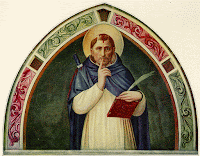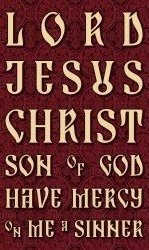+
A friend has got me very interested again in the very earliest era in Zoroastrianism. I have been reading again in M.L. West's The Hymns of Zoroaster which I find to be the most satisfying treatment of the Old Avestan text in translation.
When one has a good grasp of that early era of Zoroaster's proclamation and prophecy, one unveils unexpected windows into the pre-Mosaic, pre-Deuteronomist Hebrew religion, into the faith as ritually observed in Solomon's Temple, as well as into the Hebrew faith tradition that found its way into Christianity but not into the rabbinical reformulation that became Judaism after the Council of Javna (Jamnia).
In musing upon these things I recall that with the Persian invasion that destroyed so many Christian churches and holy places in the Holy Land, the Persians did not destroy the Church of the Nativity in Bethlehem because at that time there was a great exterior image that portrayed the Wise Men in the garb of Persian Zoroastrians or Magians.
It is a fascinating footnote in history, but it tells us that very early in Christianity the Wise Men who came with sacred gifts for the Infant God-man Jesus were associated with one or more of the following three things: the Persians themselves, the Zoroastrians, or the community of Magi in Babylon whose roots could have been two-fold going back to Zoroaster on the one hand and going back to the Biblical prophet Daniel (Saint Daniel the Prophet if you see things as the Orthodox Christians do) on the other hand.
Apart from my readings in the astounding revelation given to Zoroaster, I have also been reading again the writings of Dr. Margaret Barker and the Rev. Dr. Laurence Hemming. Both of these voices in the area of Temple Theology are touching upon the most essential and important questions regarding the identity of the first Christians, the faith Jesus lived and taught, and the ways in which the various divided Churches have unconsciously kept alive elements of the original faith.
Both Barker and Hemming have done great good in their fearless approach to academic dialogue with Mormon academics on questions regarding the Temple of Solomon and Christian origins. (In my youth there was almost no academic interaction between Mormon academics and the scholars of the various Christian Churches and Communions.)
I have also gone back to read Dr. Barker's Isaiah essay in the Eerdmans Commentary on the Bible. How I wish I had had that information when studying Isaiah, Enoch, and intertestamental literature years ago!
God grant both Barker and Hemming long lives filled with good health so they can continue to uncover what I think is the most important area of Christian inter-disciplinary and inter-communal study -- Temple Theology.
+ + +
I have also begun to read the new book by Immaculée Ilibagiza entitled "The Boy who met JESUS and A MESSAGE FOR HUMANITY". This is a new volume not to be confused with her earlier book on Segatashya emmanuel of Kibeho. If you purchase the book from Amazon, you will likely get the first book and not this new edition. It is safer to buy the new book from Immaculée's website: click here.
The first book was Immaculée's telling of the conversion, ministry, and martyrdom of Segatashya Emmanuel. This new book is Segatashya in his own words and relating the words spoken to him by the Lord Jesus Christ. I heartily recommend both books.

As I have written before, although the Church has rendered no judgement regarding Segatashya of Kibeho and his visions and encounters with Jesus, I hold absolute personal conviction as to the veracity of his witness which was confirmed by his holy martyrdom in the satanic Rwandan Genocide. The new book by Immaculée is slender and is meant for reading and then meditation and prayer. It is the sort of book I would encourage giving as a gift particularly at Christmas or Epiphany.















